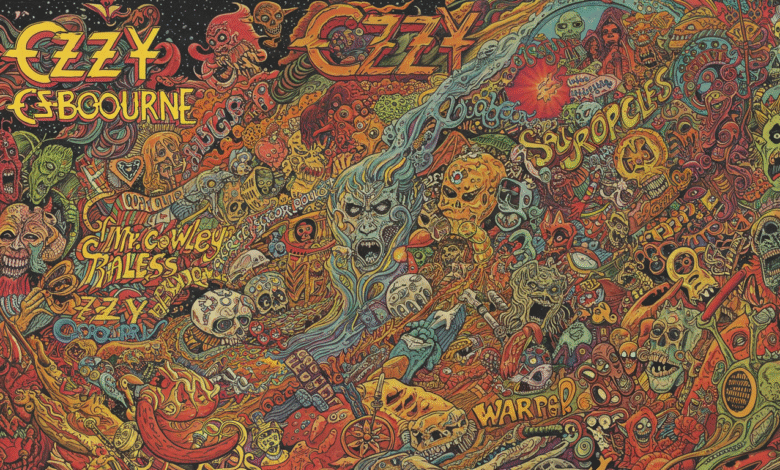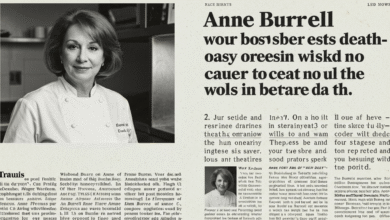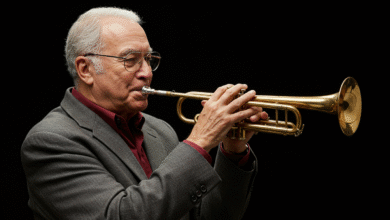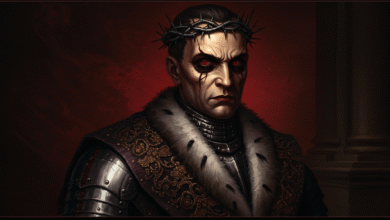“Ozzy Osbourne Songs”

Introduction
Ozzy Osbourne stands among rock’s most iconic figures. Known as the “Prince of Darkness,” he has captivated fans for decades. This article dives into his best songs, evolution, and legacy. We’ll explore his top tracks, album highlights, and influence on heavy metal. Moreover, we’ll discuss lyrical themes, musical style, and what makes his music timeless.You know about theglobespot, andaazdaily, openrendz and ozzy osbourne songs also Buzzfeed.
H2: Who Is Ozzy Osbourne?
Ozzy Osbourne is a singer-songwriter from Birmingham, England. He rose to fame in the early 1970s as lead vocalist for Black Sabbath. His distinct voice and intense stage presence set him apart. After leaving the band, he launched a successful solo career in 1980. In addition, he became a cultural icon through reality TV and other ventures. Today, he remains active in music and still inspires new generations.
H3: Early Life and Black Sabbath Era
Ozzy was born John Michael Osbourne on December 3, 1948. He struggled early on, but music offered escape. In 1968, he co-founded Black Sabbath. Their heavy riffs and dark lyrics laid the foundation for heavy metal. Songs like “Paranoid” and “Iron Man” defined a genre. However, Ozzy’s erratic behavior grew over time. Ultimately, he was dismissed from the band in 1979. Yet his impact would carry forward into his solo work.
H3: Solo Career and Family Man
In 1980, Ozzy debuted solo with Blizzard of Ozz. Featuring legendary guitarist Randy Rhoads, the album included hits like “Crazy Train.” He continued to evolve with albums such as Diary of a Madman, Bark at the Moon, and No More Tears. Meanwhile, he also navigated personal struggles. Despite controversies and health issues, he remained productive. Moreover, his marriage to Sharon Osbourne and TV show The Osbournes brought him further fame.
H2: Signature Ozzy Osbourne Songs
Ozzy has released countless songs. Yet certain tracks stand out. Here are the most memorable, shaped by emotion, riffs, and storytelling.
H3: “Crazy Train” (1980)
“Crazy Train” served as Ozzy’s solo breakthrough. It delivers a chugging riff and frantic vocals. Moreover, Randy Rhoads’s guitar solo shines here. The lyrics warn of madness in society. Due to its energy and hook, it remains a metal anthem. In addition, it’s a staple on classic rock radio.
H3: “Mr. Crowley” (1980)
Next, “Mr. Crowley” digs into occult themes. Inspired by Aleister Crowley, it features haunting keyboards. Furthermore, Rhoads contributes dramatic guitar lines. This song displays Ozzy’s curiosity about dark topics. It also highlights Randy’s technical prowess. As a result, it endures as a fan favorite.
H3: “Diary of a Madman” (1981)
The title track from his second solo album explores inner turmoil. Starting with eerie piano notes, it slowly builds. Then, heavy riffs crash in. Lyrically, it’s twisted and theatrical. Randy Rhoads again delivers a memorable performance. Meanwhile, the orchestration adds depth. Many consider it one of Ozzy’s most ambitious works.
H3: “Bark at the Moon” (1983)
This track marks a new solo chapter after Rhoads’s tragic death. With guitarist Jake E. Lee, Ozzy returned with vigor. The moody intro sets a dark tone. Then, a full-on rock anthem erupts. Lyrics hint at werewolves and transformation. Overall, it’s catchy and darker than earlier hits. It also marked commercial success.
H3: “No More Tears” (1991)
This title track from his 1991 album shows maturity. It has strong melodies and emotive lyrics. Moreover, the bassline—by Bob Daisley—drives the track. In addition, guitarist Zakk Wylde injects crushing riffs. The chorus is uplifting yet heavy. Fans and critics alike praised its depth. It stands among Ozzy’s most beloved songs.
H3: “Mama, I’m Coming Home” (1991)
In sharp contrast, this ballad reveals Ozzy’s softer side. It speaks of regret and redemption. Moreover, it features smooth vocals and simple guitar. Despite being known for heavy metal, Ozzy mastered heartfelt ballads. This track became a hit. It also broadened his appeal to rock audiences.
H3: “Shot in the Dark” (1986)
From the The Ultimate Sin album, this song gained renewed fame. It’s upbeat and melodic. Moreover, it features strong hooks in both verse and chorus. The lyrics discuss risky behavior and its consequences. Although controversial at release, the song became a radio staple and later charted high when reintroduced.
H3: “Hellraiser” (1991 & 2005)
Written by Ozzy, Iommi, Daisley, and Butler, this track debuted on No More Tears. Moreover, Ozzy recorded a version for the 2005 film Hellboy II. In both forms, it keeps its raw, heavy energy. The theme of chaos and rebellion shines through. In addition, it connects to his Black Sabbath roots. Fans still love its aggressive groove.
H2: Deep Cuts and Fan Favorites
Beyond his biggest hits, Ozzy has impressive lesser-known tracks. These deep cuts showcase his range and musicianship.
H3: “Over the Mountain” (1981)
This hard-hitting track from Diary of a Madman features soaring vocals. It pairs melodic verses with explosive choruses. Moreover, Randy Rhoads shines again. In addition, it carries an epic vibe. Although not as widely known, fans praise it at live shows.
H3: “Flying High Again” (1981)
This song echoes “Crazy Train” in tone. Yet it leans more toward celebration. The lyrics reflect triumph over adversity. Rhoads offers blistering solos. Overall, it’s a feel-good rocker that still rocks hard. Meanwhile, its message stays empowering.
H3: “Road to Nowhere” (1988)
From No Rest for the Wicked, this track blends storytelling with heavy riffs. The lyrics reflect loss and searching. In addition, guitarist Jake E. Lee adds solos that complement Ozzy’s voice. This song highlights his artistry beyond radio singles.
H3: “See You on the Other Side” (1995)
From Ozzmosis, this track diverged into a more modern rock sound. It features industrial elements and personal lyrics. Ozzy reflects on mortality and hope. While more experimental, it resonated with fans seeking depth.
H3: “Dreamer” (2001)
This ballad from Down to Earth addresses environmental concerns. It offers a heartfelt and cerebral message. With simple acoustic backing, it emphasizes lyrics. Ozzy’s voice sounds reflective and mature. Fans appreciated his willingness to evolve.
H2: Thematic Elements in Ozzy’s Songs
Ozzy’s music delves into themes both heavy and personal. These elements shaped his brand and kept fans invested.
H3: Dark, Occult Imagery
Many early Ozzy songs explore darkness. Themes of witchcraft, doom and despair surface again and again. Yet he rarely glorifies it. Instead, he uses such motifs to confront fears. In addition, this imagery set him apart from other rock acts in the ’70s and ’80s.
H3: Redemption and Regret
As Ozzy matured, his lyrics became more introspective. Tracks like “Mama, I’m Coming Home” show regret. Meanwhile, “No More Tears” reveals a plea for redemption. These songs display vulnerability. They also helped widen his audience.
H3: Societal Commentary
He often used music to comment on society. For instance, “Crazy Train” accuses societal madness. Likewise, “Dreamer” laments environmental neglect. Such themes resonate across generations, showing Ozzy’s depth.
H3: Personal Struggle
Ozzy faced addiction, health crises, and losses. His music occasionally references these struggles. It offers authenticity and connection to fans. This raw honesty adds to his legacy.
H2: Signature Album Highlights
Let’s examine the albums that produced many of these songs. Each record showcases a different chapter of his career.
H3: Blizzard of Ozz (1980)
This debut solo album introduced his solo voice. Geoff Downes and Don Airey added keyboards. Randy Rhoads co-wrote many songs. The result: a powerful, fresh sound. Key tracks include “Crazy Train” and “Mr. Crowley.”
H3: Diary of a Madman (1981)
Building on its predecessor, this album feels grander. Randy continued his monumental contributions. Songs like “Flying High Again” and the title track gained traction. However, Rhoads tragically died later that year.
H3: Bark at the Moon (1983)
This record marked his return with guitarist Jake E. Lee. The title track led the charge. Meanwhile, solos and riffs dazzled. The album retained heaviness while expanding Ozzy’s style.
H3: No Rest for the Wicked (1988)
Featuring Zakk Wylde, this album delivered fierce riffs. No Rest for the Wicked felt fresh, aggressive, and youthful. “Miracle Man” and “Crazy Babies” stood out.
H3: No More Tears (1991)
This was a commercial peak. It balanced heavy metal energy with melodic ballads. It included megahits like its title track and “Mama, I’m Coming Home.” Meanwhile, it showed Ozzy’s matured songwriting.
H3: Ozzmosis (1995)
This album experimented with modern rock textures. It still featured melodies and heavy riffs. It included “See You on the Other Side,” which reflected on life and loss.
H3: Down to Earth (2001)
Returning after a hiatus, this album tackled social issues and introspection. Songs like “Dreamer” and “Gets Me Through” echoed universal themes.
H2: Collaborations and Guest Performances
Ozzy hasn’t worked in isolation. He collaborated with many icons across eras.
H3: Randy Rhoads
Randy defined Ozzy’s early solo sound. His neoclassical solos have become legendary. Though their partnership ended tragically, it shaped decades of metal.
H3: Jake E. Lee
Lee revived Ozzy’s sound in the mid-’80s. His gritty riffs and solos contrast Randy’s technical flair. They created memorable tunes like “Bark at the Moon.”
H3: Zakk Wylde
Wylde’s influence began in No More Tears. He infused southern rock tones and blistering solos. His long tenure helped Ozzy stay relevant. Together, they crafted hard-hitting tracks like “Mama, I’m Coming Home.”
H3: Other Collaborations
Ozzy has worked with Slash, Post Malone, and Elton John. In addition, he guested on tribute albums and festivals. These collaborations show his versatility. They also introduce his presence to new audiences.
H2: Live Performances and Legacy
Ozzy’s live shows remain legendary. He brings raw energy and charisma. Moreover, he connects intimately with fans. A few points stand out:
-
Stage Presence: From Sabbath’s early days to solo tours, he commands attention. Even into his 70s, he still performs with intensity.
-
Live Albums: Releases like Speak of the Devil and Live & Loud capture this power.
-
Influence: He inspired countless artists, from Metallica to modern metal bands. In addition, his work shaped heavy metal’s future.
-
Cultural Reach: His TV show and public persona made him mainstream. Today, Ozzy remains one of music’s most recognizable figures.
H2: How to Appreciate Ozzy’s Music Today
New listeners may wonder where to start. Here’s a roadmap:
-
Begin with essentials
Play top songs: “Crazy Train,” “No More Tears,” “Bark at the Moon.” This gives a strong overview. -
Explore albums
Listen to Blizzard of Ozz, Diary of a Madman, and No More Tears. Follow chronological progression. -
Experience live
Watch live performances on streaming platforms. It brings out the raw power. -
Dive deeper
Discover deeper cuts like “Flying High Again” or “See You on the Other Side.” They add richness. -
Read lyrics
The lyrics offer context and emotional depth. They explore dark themes and introspection.
H2: Why Ozzy Osbourne Songs Endure
Several factors explain his lasting influence:
-
Memorable riffs: His songs often begin with iconic guitar moments.
-
Unique voice: Ozzy’s vocal tone is recognizable instantly.
-
Emotional honesty: He brings genuine emotion—from darkness to vulnerability.
-
Creative evolution: He never stayed in one style for too long. His music evolved with time.
-
Stage persona: Ozzy’s persona—from antics to authenticity—made him unforgettable.
Conclusion
Ozzy Osbourne’s songs don’t just entertain—they resonate. They reflect anger, fear, hope, and redemption. Moreover, they shaped heavy metal and influenced countless artists. From “Crazy Train” to “Dreamer,” his songs continue to thrill listeners worldwide. If you’re new to Ozzy, start with the essentials. Then, explore deeper and experience his legacy firsthand.



